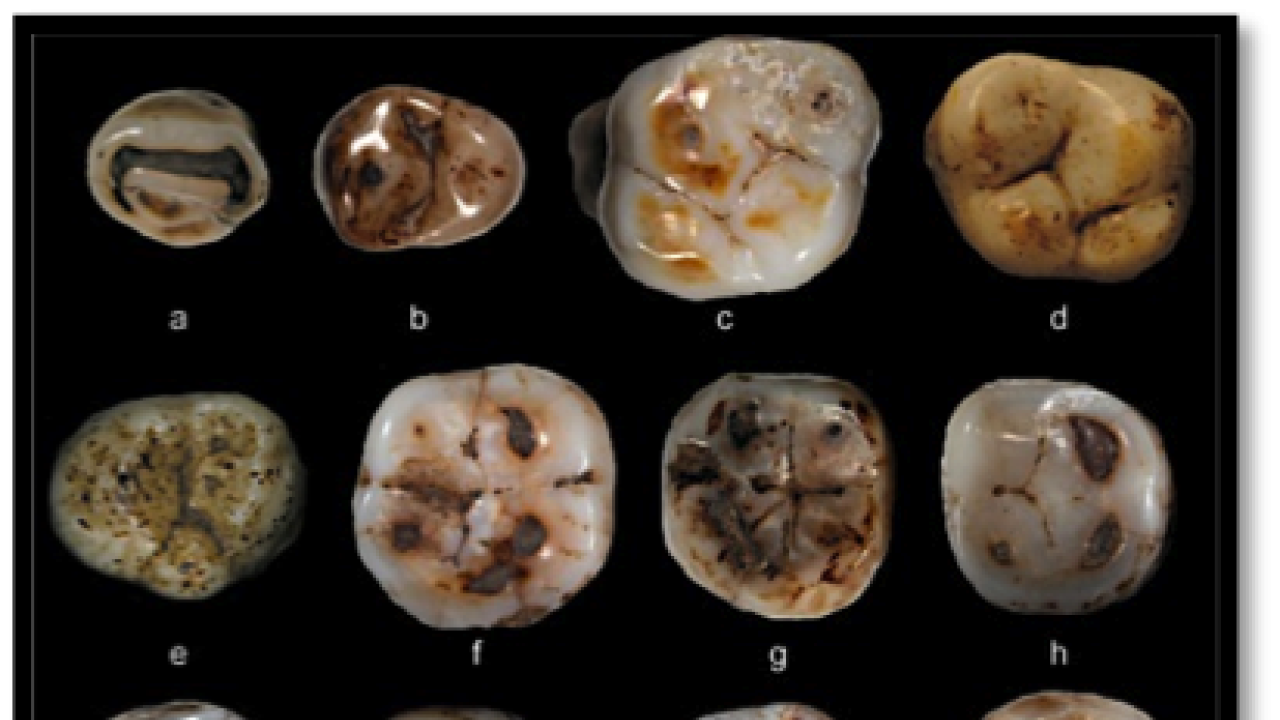
Modern humans are the only species still alive that fall within
the genus Homo. Our relatives, such as Homo erectus and
Homo habilis, emerged, mated, migrated and died out all
within the last 2.4 million years, and we have little more than
excavation sites and fossilized remains to piece together what
happened.
One burning question is how diverse the Homo genus was.
Anthropologists estimate that at least ten other species once
existed, but their interpretations sometimes rest with a single
excavation site. Therefore, the uniqueness of each species remains
under debate;the Homo genus could be less, or more,
diverse. It all depends upon current species classification systems
and anthropologists' continuous hunt to improve them.
One such system, based on the size and shape of teeth, has been
the focus of Clément Zanolli's graduate thesis work at the National
Museum of Natural History of Paris, in France and now his
postdoctoral work at ICTP. The visible part of a tooth, called the
enamel, is what remains long after the roots, gums and surrounding
tissue decompose. Enamel can, therefore, fossilize for
archeologists to unearth millennia later.
"Teeth are very sensitive to genetic changes", Zanolli says. "This
means that each species has its own tooth morphology. However, it's
sometimes difficult to be sure and precise just by looking at the
enamel of a tooth because at times it is not well preserved."
Digging deeper for a solution, Zanolli and his academic advisors
in France applied a high-resolution CT (computed tomography)
scanner to a series of teeth from various species including
Neanderthals and Homo erectus. The CT scanner x-rays
the tooth, providing a complete 3-dimensional reconstruction of its
inner structure where the hard inner structure, called dentine, and
enamel meet.
"If you look at the dentine underneath the enamel cap, it's
preserved very well the characteristic grooves and indentations and
these reliefs are sharper than the enamel, allowing you to have
more precise elements to determine the species," Zanolli
says.
Zanolli's graduate thesis was the
first publication to include an analysis of the 3-D inner
structure of teeth from the species, Homo erectus. He
analyzed fifteen teeth, mostly permanent molars, uncovered in
Central Java, Indonesia. The size of the teeth varied greatly from
small, similar to modern humans, to large, similar to modern
orangutans.
At first, Zanolli was unsure which species to which the teeth
belonged, but the detailed 3D reconstruction gave him confidence as
to the samples' Homo erectus origins. The broad variation
in size, he argues, parallels some of the global climate changes
that affected Southeast Asia between 1.5 and 0.1 million years ago,
altering entire ecological systems including different
Homo species.
Zanolli discovered that some of the teeth were similar to
Homo erectus species found further north in Southeast Asia
and to some extent in Northeast Africa, suggesting that the species
migrated great distances and survived in different climates.
Zanolli continues to study the inner structure of different
Homo species at ICTP's Multidisciplinary Laboratory. Using
the Mlab's advanced X-ray microCT system, Zanolli is currently
reconstructing 3D images of fossilized teeth from Homo
erectus to Neanderthals and modern humans. Ultimately, he
hopes to construct a clear picture of the migratory patterns of the
various human species.
"There are a lot of ways to make a fossil, but it's a very rare
and arduous process," Zanolli says. "So fossils are like a treasure
that gives us just a little piece of the overall puzzle. I'm always
excited to work with new and different fossils."
















